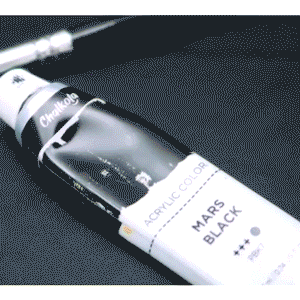Back to the Art Creators' Hub ▸ Watercolor Techniques for Beginners
Watercolor Techniques for Beginners
Now that you have a grasp of how to use watercolors, it’s time to try your hand out at painting! Practicing techniques is a great way to become more familiar with the medium while also improving your skills. Here are some basic watercolor techniques you will want to try:

Dry Brush
Using a dry brush to apply watercolor results in a “rougher” wash, often with defined, saturated streaks. Use light, angled strokes to depict the texture of grass, or drag the brush across the surface for a highly varied fill of color.
Wet on Dry
This is one of the most basic techniques, such that you won’t even realize that you’ve used it. Painting with a wet brush on dry paper gives you more control over the paint, allowing you to create both defined edges and fine details.
Wet on Wet
To use this technique, brush your paper first with clean water and then apply the paint as usual. The paint will mix into the water and begin to flow, resulting in a soft, slightly blurred finish. It’s ideal for expressive pieces where you want to imply rather than fully depict the subject.
Washing
A wash refers to a single layer of color. Flat washes appear as solid blocks of color, while graded washes often progress from a darker to a lighter hue. You can also create a graded wash with two or more colors. It’s essential to master both flat and gradient washes, as they are some of the most commonly used techniques in watercolor painting.
Layering
Watercolor is prized for its translucent nature, so it’s no surprise that layering is one of the most popular techniques. Adding a wash of color on top of another deepens it and adds dimension.
Masking
Masking, also known as resist painting, involves covering up areas of the canvas you don’t want the paint to reach. It’s also useful for creating sharp edges within your painting. Simply apply masking fluid or painter’s tape to the desired area and paint you normally would. Once you lift the mask, the paper’s surface is revealed — which means you can also use this technique in place of white paint.
Lifting
There are two ways to lift paint off a canvas. You can either dab it off with a sponge, leaving a more diffused color behind, or apply a crumpled plastic wrap to wet paint and leave it to dry. Peeling off the wrap leaves interesting jagged patterns — something you might want to use in abstract or high-texture artworks.
Salt Technique
Salt can be applied to paint in varying degrees of dryness to create interesting textures. Applying salt to wet paint absorbs some of the moisture, leaving behind paler hues with more saturated borders. Once the paint is dry, you can brush off the salt with a clean brush and continue painting as usual.
Rubbing Alcohol
This technique creates bubbly, organic-looking shapes within each wash. Begin by painting a saturated layer across your canvas. Then, apply rubbing alcohol to the surface with a Q-tip, clean brush, or a dropper. The alcohol will repel some of the pigment and reveal a lighter shade underneath.

